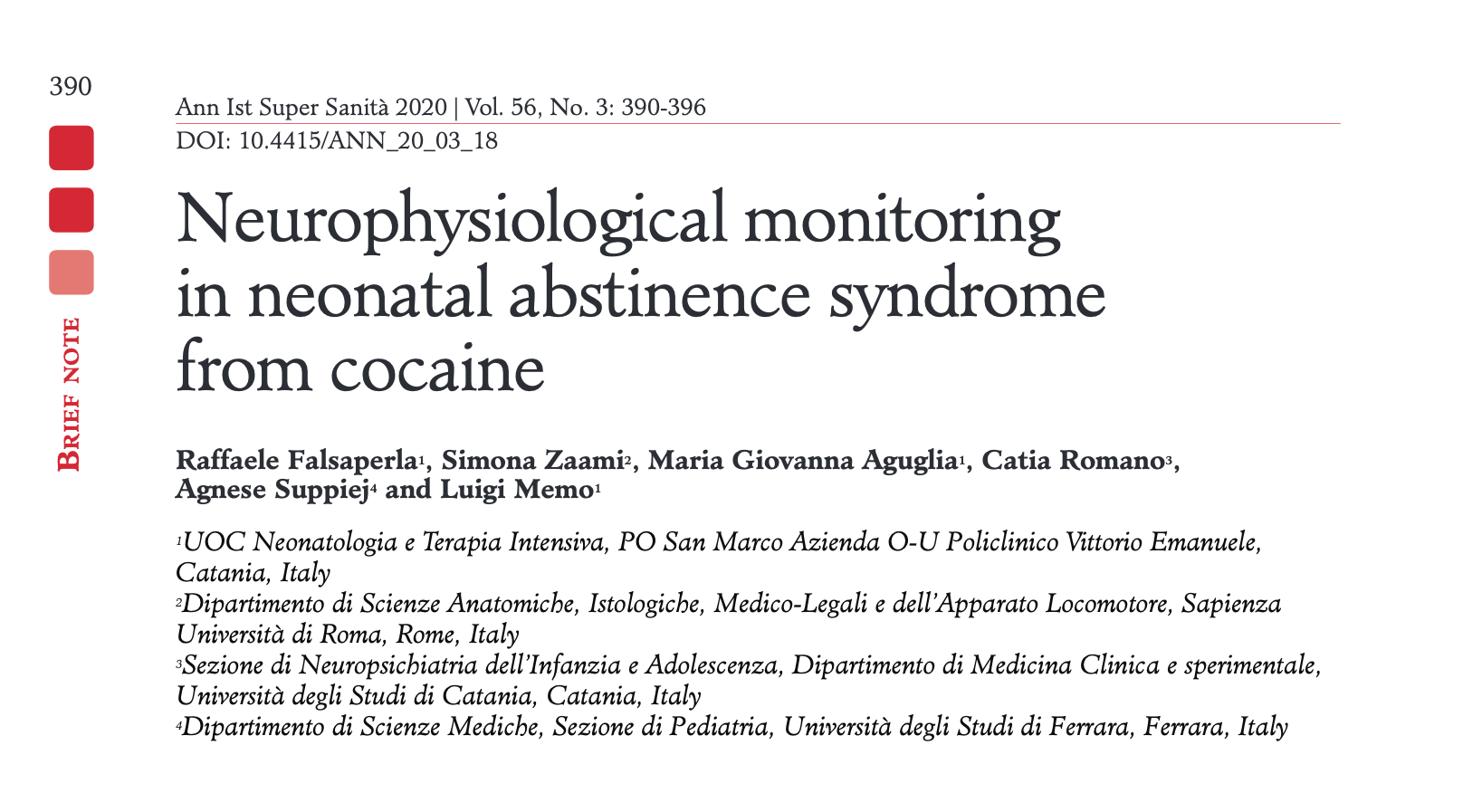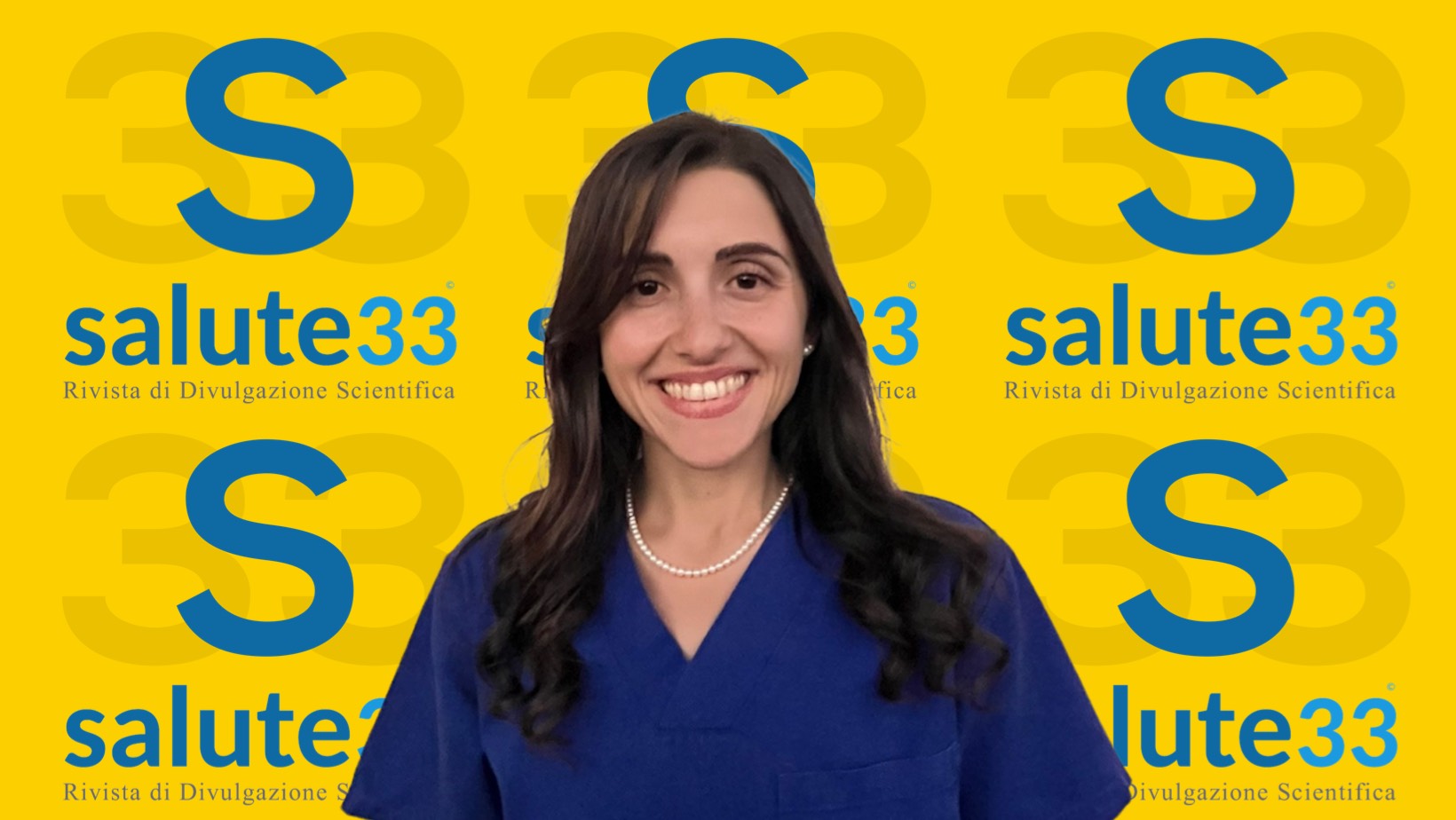Neurophysiological monitoring in neonatal abstinence syndrome from cocaine
Raffaele Falsaperla, Simona Zaami, Maria Giovanna Aguglia, Catia Romano, Agnese Suppiej, Luigi Memo
Abstract
Introduction. Neonatal abstinence syndrome (NAS) in a newborn is a result of the
sudden discontinuation of exposure to psychotropic drugs abused by the mother during
pregnancy. Since forty decades, the standardized Finnegan Neonatal Abstinence Scoring
Tool (FNAST) documents the infant withdrawal, and initiate the appropriate treatment
regimen, when elevated scored are reported. Whereas FNAST is successfully applied for
opioids NAS, in case of other psychotropic drugs and especially cocaine, the tool is not
always efficacious or predictive.
Methods. Continuous v-Electroencephalography (vEEG) provides particularly useful
information about brain cortical functioning and evaluation of background activity in
normal newborns. vEEG allows to properly study and identify clinical manifestations
as physiological motor paroxysms, that disappear from birth to infant age in correlation
with the neurological development. Due to its feature to be a non-invasive tool continuous
vEEG monitoring could be used to describe some clinical manifestations and assess
if they can be correlated to possible injuries in critical neonates as those exposed in utero
to psychoactive drugs presenting NAS.
Results. An example for the potential use of such methodology is discussed in a case
of NAS due to prenatal exposure to cocaine as a complementary tool for the evaluation
of behavioural state and clinical and neurological signs in newborns in utero exposed to
psychoactive drugs, excluding epileptic phenomena.
Discussion. Video-EEG recording could be considered an important and objective tool
that allows the evaluation of behavioural state and clinical and neurological signs in newborns
in utero exposed to psychoactive drugs and the neurophysiological definition of
signs and symptoms, which cannot be evaluated by FNAST such as startles and its variability
during subsequent days after birth, subclinical seizures or brain injuries.
Keywords
Full Text:
References
Kocherlakota P. Neonatal abstinence syndrome. Pediatrics 2014; 134(2):e547-61. doi: 10.1542/peds.2013-3524.
Stover MW, Davis JM. Opioids in pregnancy and neonatal abstinence syndrome. Semin Perinatol. 2015 39(7):561-5. doi: 10.1053/j.semperi.2015.08.013.
Chasnoff IJ, Burns W, Schnoll SH, Burns K A. Cocaine Use in Pregnancy. New Engl J Med. 1985; 313(11): 666–669.
Finnegan LP, Kron RE, Connaughton JF, Emich JP. Assessment and treatment of abstinence in the infant of the drug-dependent mother. Int J Clin Pharmacol Biopharm. 1975; 12 (1-2):19-32.
Jansson LM, Velez M, Harrow C. The opioid exposed newborn: Assessment and pharmacologic management. J Opioid Manag. 2009; 5(1):47-55.
Doberczak TM, Shanzer S, Senie RT, Kandall SR. Neonatal neurologic and electroencephalographic effects of intrauterine cocaine exposure. J Pediatr. 1988(2); 13:354-358.
https://www.repubblica.it/cronaca/2019/11/03/news/i_medici_emergenza_neonati_in_crisi_di_astinenza_-240102649/
Carlier J, La Maida N, Di Trana AG, Huestis MA, Pichini S, Busardò FP. Testing unconventional matrices to monitor for prenatal exposure to heroin, cocaine, amphetamines, synthetic cathinones, and synthetic opioids. Ther Drug Monit. 2019 Dec 4. doi: 10.1097/FTD.0000000000000719.
Joya X, Gomez-Culebras M, Callejón A, Friguls B, Puig C, Ortigosa S, Morini L, Garcia-Algar O, Vall O. Cocaine use during pregnancy assessed by hair analysis in a Canary Islands cohort. BMC Pregnancy Childbirth. 2012;12:2. doi:10.1186/1471-2393-12-2.
Joya X, Fríguls B, Simó M, Civit E, de la Torre R, Palomeque A, Vall O, Pichini S, Garcia-Algar O. Acute heroin intoxication in a baby chronically exposed to cocaine and heroin: a case report. J Med Case Rep. 2011;5:288.doi: 10.1186/1752-1947-5-288.
García-Algar O, Felipe A, Puig C, Monleón T, Pacifici R, Pichini S. Fetal exposure to cocaine and infections during the first 18 months of life in infants from a Mediterranean city. Acta Paediatr. 2007;96(5):762-763.
Facini C, Spagnoli C, Pisani F. Epileptic and non-epileptic paroxysmal motor phenomena in newborns. J Matern Fetal Neonatal Med. 2016; 29(22):3652-9. doi: 10.3109/14767058.2016.1140735.




Commento all'articolo